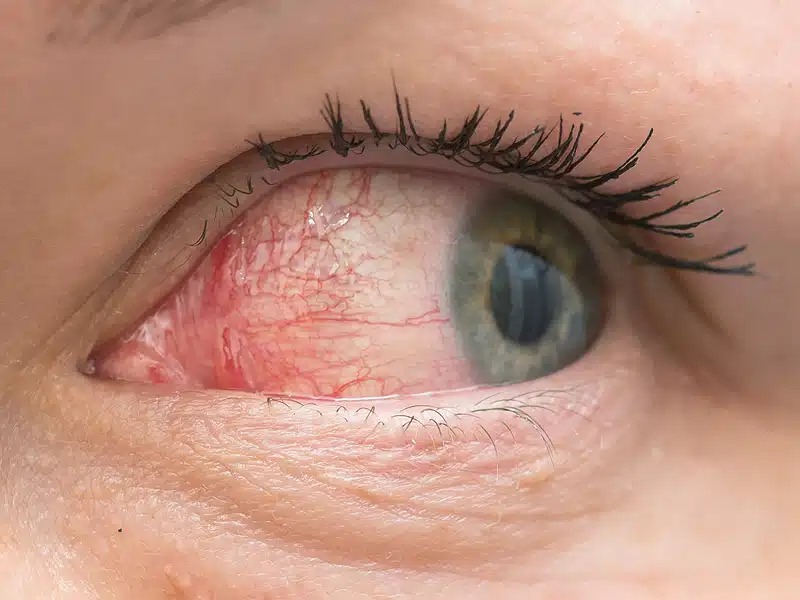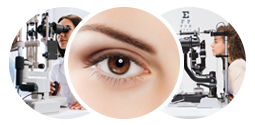Understanding Dry Eye Syndrome: Causes, Symptoms, and Treatment
Dry Eye Syndrome (DES), also known as keratoconjunctivitis sicca, is a common and often chronic condition that occurs when the eyes do not produce enough tears or when tears evaporate too quickly. Tears are essential for maintaining the health of the eye's surface and providing clear vision. When tear production is inadequate or unstable, it can lead to discomfort, irritation, and potential vision problems. With increased screen time, environmental changes, and aging populations, DES has become a growing concern for many individuals worldwide.
Causes of Dry Eye Syndrome There are several factors that contribute to dry eyes, including:
-
Aging – Tear production naturally decreases with age, making older individuals, particularly those over 50, more prone to DES.
-
Environmental Conditions – Exposure to wind, smoke, air conditioning, and dry climates can accelerate tear evaporation, leading to increased eye dryness.
-
Screen Time and Digital Device Use – Prolonged use of computers, smartphones, and tablets reduces blinking frequency, which is essential for maintaining a stable tear film and evenly distributing moisture over the eye surface.
-
Medical Conditions – Autoimmune diseases such as Sjögren's syndrome, rheumatoid arthritis, lupus, thyroid disorders, and diabetes can impair tear production and quality.
-
Medications – Certain medications can contribute to DES, including antihistamines, decongestants, antidepressants, beta-blockers, birth control pills, and certain acne treatments like isotretinoin.
-
Contact Lenses – Long-term or improper use of contact lenses can disrupt the tear film and lead to chronic dryness and irritation.
-
Hormonal Changes – Women undergoing menopause, pregnancy, or using oral contraceptives may experience fluctuations in tear production due to hormonal imbalances.
-
Eye Surgeries and Procedures – Procedures such as LASIK and cataract surgery can sometimes disrupt normal tear production and contribute to temporary or long-term dryness.
-
Vitamin Deficiencies – Inadequate intake of essential vitamins, particularly Vitamin A, can affect tear production and eye health.
Symptoms of Dry Eye Syndrome
People with DES often experience a combination of the following symptoms:
- A stinging, burning, or scratchy sensation in the eyes
- Redness and irritation, sometimes accompanied by inflammation
- Sensitivity to light (photophobia)
- Blurry vision or fluctuating visual clarity
- A feeling of grittiness or having something in the eye
- Excessive tearing (as a reflex response to dryness)
- Mucus discharge around the eyes
- Difficulty wearing contact lenses due to discomfort
- Eye fatigue, especially after extended periods of reading or screen use
Diagnosis and Treatment
If you suspect you have dry eye syndrome, an eye doctor may perform various tests to measure tear production and evaluate tear quality. Common diagnostic tests include:
-
Schirmer’s Test – Measures tear production by placing a thin strip of filter paper under the lower eyelid.
-
Tear Breakup Time (TBUT) – Assesses how long tears remain stable before evaporating.
-
Osmolarity Test – Evaluates the salt concentration in tears, which is often elevated in DES.
-
Meibography – Imaging technique to examine the health of the meibomian glands, responsible for producing the oily layer of tears.
Treatment options vary based on severity and underlying causes and may include:
-
Artificial Tears and Eye Drops – Over-the-counter lubricating eye drops (preservative-free options are preferred for long-term use) can help alleviate mild dryness and irritation.
-
Prescription Medications – Doctors may prescribe anti-inflammatory eye drops such as cyclosporine (Restasis), lifitegrast (Xiidra), or corticosteroid drops to improve tear production and reduce inflammation.
-
Lifestyle Adjustments – Reducing screen time, taking frequent breaks from digital devices, using a humidifier to add moisture to the air, and wearing wraparound sunglasses outdoors can help prevent tear evaporation.
-
Punctal Plugs – Small plugs inserted into the tear ducts help retain moisture by slowing tear drainage from the eyes.
-
Nutritional Support – Omega-3 fatty acids found in fish oil, flaxseed supplements, and a diet rich in healthy fats can improve tear quality and reduce inflammation.
-
Eyelid Hygiene and Warm Compresses – Keeping the eyelids clean by using lid scrubs and applying warm compresses can help improve meibomian gland function, particularly in cases of meibomian gland dysfunction (MGD), a leading cause of evaporative dry eye.
Prevention and Management
While DES cannot always be prevented, adopting healthy habits can significantly reduce the risk and severity of symptoms:
-
Blink more frequently – Make a conscious effort to blink regularly, especially when using digital screens.
-
Stay hydrated – Drink plenty of water to maintain proper tear production.
-
Maintain a balanced diet – Include foods rich in omega-3 fatty acids, such as salmon, walnuts, and flaxseeds, to support tear film health.
-
Avoid environmental irritants – Reduce exposure to smoke, wind, air conditioning, and heating systems that can exacerbate dryness.
-
Use proper eye protection – Wear wraparound sunglasses or moisture chamber glasses in dry or windy conditions.
-
Limit contact lens use – Give your eyes a break from contact lenses whenever possible and follow proper hygiene practices.
-
Take breaks from screens – Follow the 20-20-20 rule: every 20 minutes, look 20 feet away for at least 20 seconds to reduce eye strain and dryness.
Conclusion
Dry Eye Syndrome is a widespread yet manageable condition. While it can significantly impact daily life, proper diagnosis, lifestyle modifications, and appropriate treatment can alleviate discomfort and protect long-term eye health. If symptoms persist or worsen, consulting an eye care professional is essential for tailored treatment and prevention strategies.


